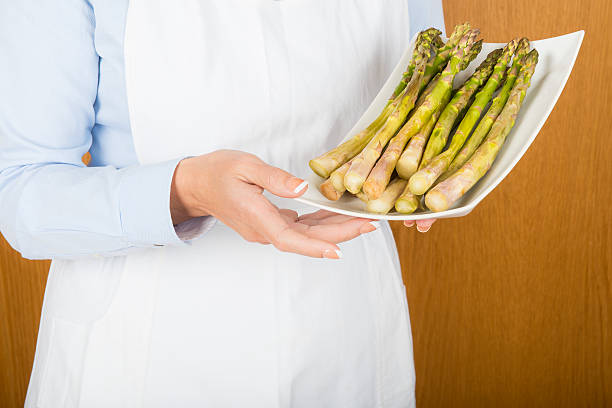Asparagus is a beloved vegetable, popular for its distinct taste and versatility in the kitchen. But when it comes to cooking with asparagus, there is one important question to ask: how do you know if it has gone bad? Here you we’ll explore the signs of bad asparagus, tips for storing and preserving your asparagus, and ways to incorporate this healthy and nutrient-rich vegetable into your diet.
How to Know if Asparagus is Bad?
First and foremost, it’s important to know the signs of bad asparagus. Fresh asparagus should be firm and bright green, with firm, closed tips. If the tips are soft or slimy, or if the stalks themselves are limp and wilted, it’s a telltale sign that the asparagus has gone bad. Additionally, if the asparagus has a strong, unpleasant odor or if it’s moldy, it should be discarded immediately.

Tips for Storing and Preserving Your Asparagus
To avoid having to throw bad asparagus away, proper storage is key. Store your asparagus in the refrigerator, unwashed, with the ends in water. Alternatively, you can store them in a plastic bag or wrap them in a damp paper towel to keep them moist. It’s important to eat your asparagus within 2-3 days of purchasing it to ensure maximum freshness.
Ways to Incorporate This Healthy and Nutrient-Rich Vegetable
Another way to make sure your asparagus stays fresh is to blanch it before storing it. Blanching helps to retain the asparagus’ vibrant green color and helps to maintain its texture. To blanch your asparagus, simply immerse it in boiling water for one to two minutes, then immediately place it in an ice water bath for a few minutes to stop the cooking process. Dry the asparagus thoroughly and store it in an airtight container in the fridge.
Now that you know how to spot fresh asparagus and preserve it, let’s talk about how to prepare it. Asparagus is an incredibly versatile vegetable that can be cooked in a variety of ways. You can roast it, grill it, steam it, or even eat it raw. Simply trim the woody ends off the stalks and decide how you want to cook it.
If you’re looking for a quick and easy Asparagus recipe, try roasting your asparagus. Preheat your oven to 425°F, toss your asparagus with olive oil, salt, and pepper, and spread them out in a single layer on a baking sheet. Roast for 12-15 minutes, until tender and slightly browned. This is a delicious and healthy side dish that pairs well with just about anything.
Conclusion:
Asparagus is a tasty and nutritious vegetable that can be enjoyed in a variety of ways. Knowing how to spot bad asparagus, how to store it properly, and how to prepare it can help you incorporate this vegetable into your diet more easily. With these tips and tricks, you can be sure that the asparagus you’re cooking with is fresh, delicious, and safe to eat.
